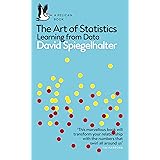Binomial Probabilities on TI-84 Calculator
Binomial Probabilities on TI-84 Calculator, Binomial probabilities are an essential concept in statistics, particularly in scenarios involving a fixed number of trials, two possible outcomes, and a constant probability of success.
If you’re looking to compute binomial probabilities quickly, the TI-84 calculator is a powerful tool that can simplify this process significantly.
Binomial Probabilities on TI-84 Calculator
In this article, we’ll guide you through how to calculate binomial probabilities using the TI-84, along with practical examples.
What is a Binomial Probability?
A binomial probability refers to the probability of achieving a specific number of successes in a fixed number of independent Bernoulli trials (experiments with two possible outcomes).
binompdf(n, p, x) returns the probability associated with the binomial pdf.
binomcdf(n, p, x) returns the cumulative probability associated with the binomial cdf.
where:
- n = number of trials
- p = probability of success on a given trial
- x = total number of successes
Using the TI-84 for Binomial Probabilities
The TI-84 calculator has built-in functions to make calculating binomial probabilities straightforward. Here’s how to use it effectively:
Step-by-Step Guide
- Turn on Your Calculator: Begin by pressing the
ONbutton. - Access the Distribution Menu: Press the
2ndbutton followed byVARSto open the distribution menu. - Choose the Binomial Function: Scroll down to find either
binompdf(for probabilities of a specific number of successes) orbinomcdf(for cumulative probabilities up to a certain number of successes). - Enter Your Parameters:
- For binompdf: Input the number of trials ( n ), the probability of success ( p ), and the number of successes ( k ).
- For binomcdf: Input ( n ), ( p ), and the maximum number of successes ( k ).
- Calculate: Press
ENTERto compute the binomial probability.
Example Calculation
Suppose you want to find the probability of getting exactly 3 heads when flipping a coin 10 times. Here’s how you’d do that:
- Identify Parameters:
- Number of trials (n) = 10
- Probability of heads (p) = 0.5 (since a coin has two sides)
- Number of heads (k) = 3
- Use
binompdf:
- Navigate to the distribution menu.
- Select
binompdf. - Input:
10, 0.5, 3.
- Result: The calculator will provide the probability for exactly 3 heads in 10 flips.
Conclusion
Calculating binomial probabilities can be effortlessly done using the TI-84 calculator.
Whether you are a student, educator, or simply interested in statistics, mastering this function will save you time and enhance your data analysis capabilities.
By understanding how to effectively use your calculator for binomial probabilities, you can unlock the potential of statistical analysis in various fields.
Final Tips
- Always double-check that your calculator is in the correct mode for your calculations.
- Familiarize yourself with other functions in the distribution menu for a broader understanding of statistical analysis.
- Practice with various problems to strengthen your skills in calculating binomial probabilities.
Utilizing the TI-84 to calculate binomial probabilities can streamline your statistical computations and provide accurate results quickly.
Happy calculating!



